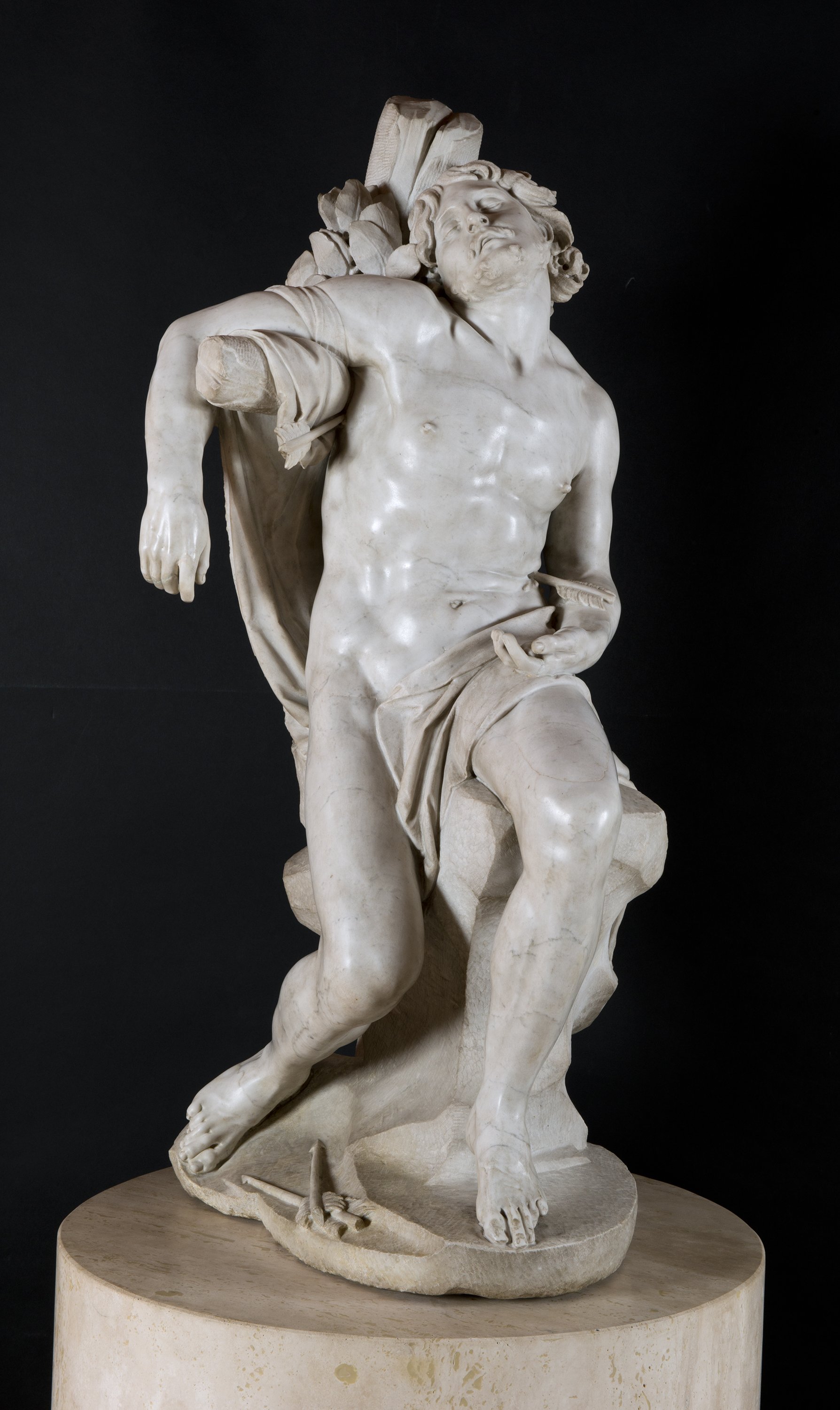San Sebastian
Saint Sebastian, born in Gaul according to legend, was a Roman centurion who was martyred in Rome for professing the Christian faith during Diocletian’s reign. His torture consisted in being tied to a tree trunk by soldiers and showered with arrows. After his torment Saint Irene and her companions approached the place to bury Sebastian. They discovered that he was still breathing and decided to pluck out the arrows and treat his wounds. When he had recovered he again presented himself before Diocletian. This time the emperor gave orders for him to be executed in the hippodrome of the imperial palace, where he was whipped and beaten. His corpse was thrown into the Cloaca Maxima to prevent Christians from worshiping him. However, in a dream Saint Sebastian revealed to Saint Lucy the spot where his remains lay so that they could be buried appropriately. The saint’s connection with Rome, where episodes of his life took place, was further strengthened when he was designated the city’s third patron saint after Peter and Paul.
The marble sculpture, designed to be smaller than life-size, represents the moments before Saint Irene’s arrival; the tormentors have abandoned the place of execution and the saint is slowly dying from his arrow wounds. Bernini places the figure on a rock and uses the tree trunk where he is martyred as a support for his back. The saint’s right arm, still displaying one of the bindings, rests on a dry branch, while his left leg is positioned in front of him to prop up his body, which, judging by the position of the hip and the right leg, seems about to slip to the ground. His other arm, which hangs lifelessly parallel to the trunk, his hand resting on his thigh, has the same appearance of abandonment as the right leg. The unstable, delicate balance of the saint’s pose has been attributed to the transition he is undergoing. The handling of the face, with its calm expression, parted lips and closed eyes, and the precisely sculpted veins and still tense muscles of his body are a telling reflection of the in-depth study Bernini made of these moments between life and death.
The sculpture was acquired or commissioned by the artist’s benefactor Cardinal Maffeo Barberini (1568‒1644), who became pope in 1623 as Urban VIII. It was initially thought to have been crafted for the Barberini family’s chapel in the church of Sant’Andrea della Valle, which was erected precisely on the spot where Saint Sebastian’s body had been recovered from the Cloaca Maxima, though no evidence has been found of its location there. It has, however, been traced to the palace of Cardinal Maffeo Barberini, where it may have decorated his chapel. The sculpture was first inventoried in 1628, when it was moved from the family home on the Via dei Giubbonari to the new building on the Via delle Quattro Fontane, where it passed to the possession of Maffeo’s nephew, Cardinal Francesco Barberini (1597‒1679). The Saint Sebastian continued to be owned by the family until 1935, when it was acquired from their heirs by Heinrich Thyssen-Bornemisza (1875‒1947), together with other very notable paintings, for his collection, then installed in Villa Favorita, Lugano. The appearance of a document dated 29 December 1617 recording the payment of 50 escudos made by Maffeo Barberini to Gian Lorenzo’s father has enabled the sculpture to be dated. To craft this important work belonging to his early period, which comes chronologically after the Saint Lawrence on the Gridiron in the Contini-Bonacossi Collection (Palazzo Pitti, Florence) and before the group of Aeneas, Anchises and Ascanius in the Galleria Borghese in Rome, Bernini drew inspiration from models of the Passion of Christ and the work of Michelangelo. Critics have identified two specific pieces by the great master on which it could be based: the Vatican Pietà and that in the Museo dell’Opera del Duomo in Florence, which was in Rome in the early seventeenth century.
This sculpture of Saint Sebastian is on temporary loan to the Museo Nacional Thyssen-Bornemisza from a private collection.



